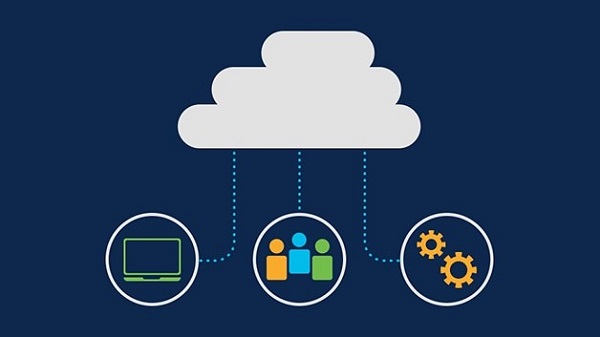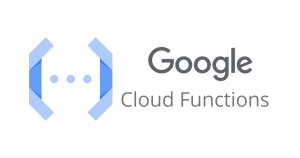Introduction: Java on Google Cloud Platform
It is a large credit to Java’s ongoing significance and flexibility that it has preserved its position in cloud computing despite the truth that mechanical settings are continuously developing in this age. Java’s flexibility, platform impartiality, and huge network can make it an important tool for businesses and programmers, predominantly as more and more firms are shifting their functions to google cloud-based solutions.
This post aims to testify to how Java continues to develop and be molded by the revolution in cloud computing, therefore illustrating the significant role that Java plays in contemporary corporate applications. Through the details of Java’s many sides in cloud situations, we provide an understanding of the reasons why it remains the language of selection for industries that are attempting to circumnavigate the difficulty of the cloud.
What is meant by the term “Cloud Computing”?
Cloud computing is a groundbreaking technology that offers a huge diversity of computing services, such as servers, storage, folders, software, analytics, and intelligence, through the Internet, which is normally known as “the cloud.” This forward-thinking policy makes it possible to put up flexible incomes, achieve rapid scaling, and realize economies of scale. Users regularly only pay for the cloud services that they essentially use. This aids in lessening functional expense, enhances the competence of substructure supervision, and permits scaling as business needs change.
Through the use of cloud computing, it is possible to access many technical services, like processing power and storage, on an as-needed basis. This eradicates the requirement to own and operate physical servers and data centers. Because it has become the backbone for providing mobile access to data and apps, as well as for powering complex computational and predictive analysis through AI jobs, it has become an essential component for both people and enterprises operating in the digital age.
By using cloud computing, companies can eliminate some expenditures and overhead associated with information technology. For example, they are no longer required to upgrade and preserve their servers since the cloud vendor they are using will take care of such tasks. Since staff and consumers may access similar files and programs from any place, the cloud could even make it simpler for businesses to conduct functionality on a worldwide scale.
The Effortless Integration of Java Software with Cloud Computing
An important contributor to Java’s sustained application and significance in the current era of cloud computing is the language’s capability to take part in cloud settings in a method that is both harmonic and well-organized. This interoperability is a consequence of Java’s intrinsic capabilities as well as the Java Virtual Machine (JVM), which makes it a flexible and dependable choice for businesses and developers that are unstable in cloud-based resolutions.
Cloud Operations

Image: Cisco
A technique known as virtualization is responsible for making cloud computing a reality. Through the use of virtualization, it is possible to create a “virtual” computer that is a simulated computer that only uses digital data and acts as if it were a real computer with its hardware. This kind of computer is referred to as a virtual machine in the technical world. When correctly executed, virtual machines on a similar host machine are sandboxed from one another. This means that they do not interrelate with each other in any way.
The files and apps from one virtual machine are not visible to the other virtual machines, although they are all situated on the same physical machine. In addition, virtual machines provide a more effective use of the hardware that is hosting them. Through the use of many virtual machines simultaneously, a single server can operate a multitude of virtual “servers,” so transforming a data center into a collection of data centers that are capable of catering to a multitude of businesses.
As a result, cloud service providers can supply the use of their servers to a far larger number of clients at the same time than they would be able to do otherwise, and they can do it at a lower cost. Cloud servers, in general, should be guaranteed to remain up and accessible at all times, even if individual servers experience a failure. In general, cloud service providers provide backups of their services on several computers and in various geographical locations.
Users may access managed cloud services by using a browser or by using an application. They connect to the cloud via the Internet, which means that they connect to the cloud through a significant number of linked networks. This is true regardless of the device that the user is using.
How much does Google Cloud Platform cost?
The Google Cloud Platform is available to everyone at no cost. Customers of Google Cloud Platform get free credits worth $700 to use for running, testing, and deploying workloads. Free use of more than twenty goods is available to all subscribers, with monthly usage limitations.
Google Cloud Platform (GCP) workloads are accessible on a pay-as-you-go basis, with no open expenditures and no expiry penalties; it is accessible for use in the place where free credits are exhausted. When it comes to the Google Cloud Platform for Java, users have entry to a diverse collection of services and products. Each one’s expense is checked by the product itself as well as the way it is used. Customers have access to the official complete list of GCP products, which offers additional information in more depth.
Understanding the concept of Debugging Java on the Google Cloud Platform
When you talk about Debugging Java on the Google Cloud Platform, you need to implement an organized outlook, which would make sure that you effectively fix problems. At the same time, you would need to lessen the work stoppage. In this particular area, we need to get into an in-depth of the optimal practices that are needed for amending Java over CGP. It will help you to deal with complicated issues confidently.
At first, it is imperative to make logging of debug possible for applications of Java. As you set the level of logging to debug, it will help you have in-depth information on the application of your behavior, such as the type of calls or other related data. This will further help you to see powerful hassles and plug out the exact source. You can adopt an important practice, which is to make use of Console Google Cloud, which offers built-in logging features. It is important to know that Console offers a centralized login interface. It will let users view and assess the logs of your applications.
Users can also get the best logs with the help of date, seriousness, and other aspects, which will make it convenient to locate and resolve problems with ease. In addition, making use of the power of the cloud’s Google potential will help you improve the experience of debugging prominently. When you input data in your application, you will be able to view the supply of dependencies and appeals all over the system. It will also help offer inestimable details, which will fix important hassles.
Google Cloud Java Cloud Functions

Image: LinkedIn
Software systems in the modern era have gotten ever more complicated. Through the provision of both managed and unmanaged services, cloud platforms have been instrumental in bringing some of the complexity under control. Therefore, it should not come as a surprise that businesses have moved their workloads to cloud platforms. Keeping up with the rapid expansion of cloud platforms requires developers to have a solid understanding of when and how to take advantage of these services.
One of the quite important benefits of using Google Cloud Java Cloud Functions is its capability to mechanically handle the infrastructure needed to function apps, removing the requirement for labor-intensive provisioning and grading. This means that programmers could organize their apps quickly, without perturbing about the fundamental infrastructure, and emphasis on writing code rather than dealing with servers. Moreover, Google Cloud Java Cloud Functions allows for all-in-one incorporation with additional Google Cloud services, like Cloud Storage, Cloud Firestore, and Cloud Pub/Sub, making it simple to make multifaceted, scalable mobile apps that could manage huge capacities of traffic.
Google Cloud functions are an excellent choice for situations in which you want to deploy some code in the cloud but do not want to deal with a virtual machine that is hosted in the cloud. You can do what you are excellent at, which is developing code that solves issues, thanks to functions.
Benefits of using Java on GCP
1) As you enter the area of cloud computing, the selection of programming language could be an important choice that could create and break your project’s achievement. Java, one of the quite famous and extensively applied programming languages, has been transformed by its incorporation with Google Cloud Platform (GCP). By applying the strong point of Java with GCP, programmers could solve an overabundance of advantages that could improve its complete expansion experience.
2) One of the main benefits of making use of Java on GCP is the comfort of placement. With Java, you can readily deploy your app to GCP thanks to its unified addition to the Google Cloud App Engine. This means you can concentrate on creating the app without upsetting the fundamental substructure. Furthermore, GCP’s dependable and extremely accessible infrastructure safeguards that your Java apps can manage huge traffic and great capacities of data, making it the best selection for managing scalable and consistent apps.
3) Alternatively, the most significant advantage of making use of Java on GCP is the entry to a varied series of Google Cloud services. With GCP’s vigorous set of APIs and facilities, enterprises could influence the control of ML, computer vision, and NLP to develop bright and data-driven apps. Java’s massive network of libraries and outlines, joined with GCP’s widespread choice of services, allows designers to create compound and complex apps that could resolve actual-world difficulties.
4) Furthermore, using Java on GCP offers Java developers an important and lucrative solution. With GCP’s pay-per-use assessment model, you can just pay for the resources you use, creating a perfect selection for beginners and smaller industries. Furthermore, GCP’s automatic grading and load harmonizing competencies ensure that your Java apps can handle unexpected points in traffic without experiencing added expenses.
Bottom Line
From simplicity of placement to access to a wide variety of Google Cloud services, cost-effectiveness, and flexibility, Java Web Development Company India offers strong and scalable apps. In conclusion, using Java on GCP offers a wide range of benefits that can augment your development experience.





